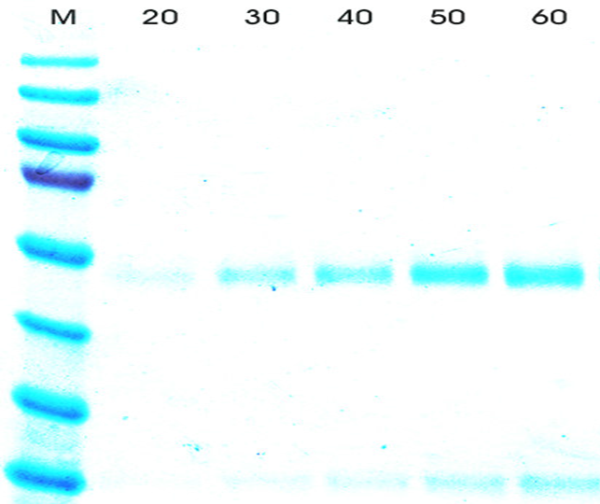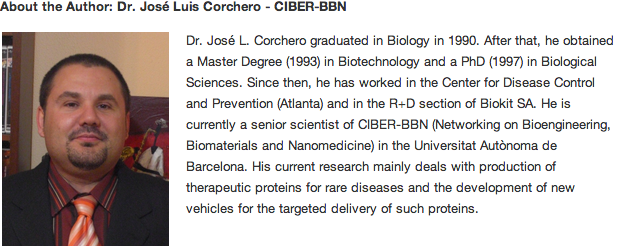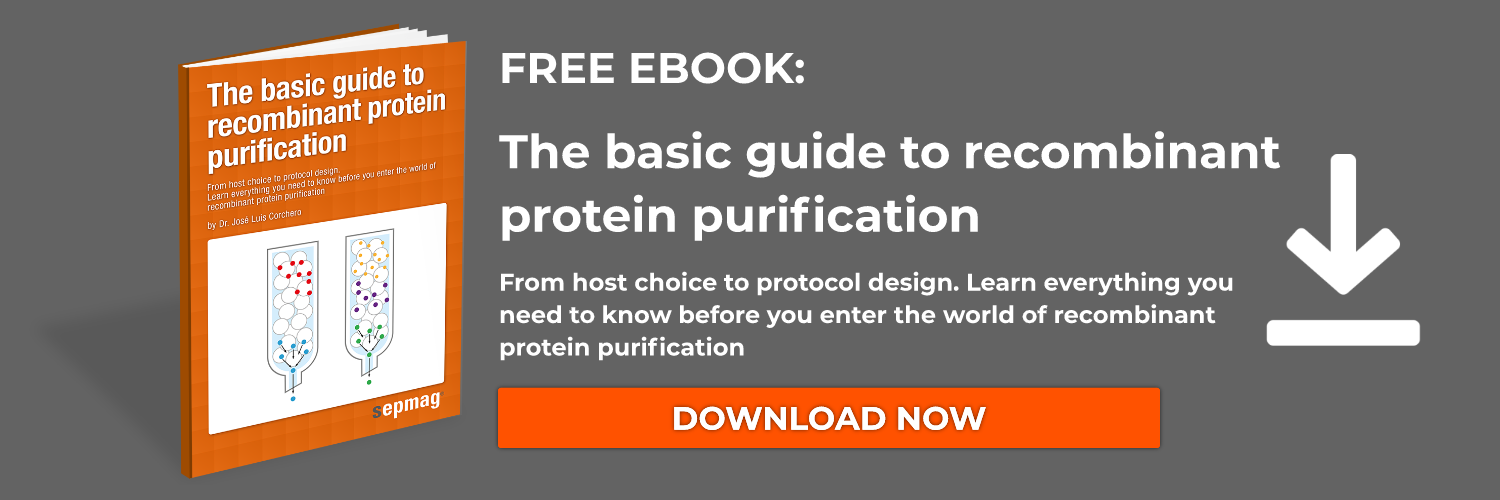Affinity chromatography allows us to obtain good results and a high level of purity with a single purification step, since a structure that is exclusively found in the recombinant protein is used as a tag. However, this is not possible in all cases. There are proteins that don’t accept changes in their sequence, even if the changes are so minimal as the incorporation of a tag, since the proteins quickly lose their biological activity with any modifications in their structure.

This post is an excerpt from our protein purification handbook, which explains the basics of recombinant protein purification. Download The Basic Guide to Recombinant Protein Purification here:
Understanding the purpose of each purification stage
The question that derives from this necessity is: How to choose these techniques and apply them in an order that gives the best results? Knowledge of the purpose of each stage and the properties that are offered by each technique are key for the correct development of the purification. Thus, there are 4 characteristics to assess in each stage of the protocol.
First, there is the resolution of the technique, this is, its capacity to differentiate and separate molecules with similar properties. The resolution depends on several factors such as selectivity of the column or the molecules contained in the sample. It gains importance in the last stages of the purification, when most contaminants have been eliminated and only the most similar ones to the protein to be purified are left.
Second, we need to assess the binding capacity, which refers to the sample amount that is admitted each time by the chromatography matrix. This can depend on the volume or the total amount of molecules that can bind to the column. Therefore, it’s interesting to have an increased capacity at the beginning of the purification, since at the end of the process the sample amount is reduced.
We also need to take into account the speed of the process, especially in the first stages. As already mentioned, fast purification minimizes the exposure of the recombinant protein to proteases and other contaminants that can degrade it, optimizing the recovered amount at the end. Additionally, the initial purification stages are the ones that present highest sample volumes, so that velocity speeds up the overall process.
Lastly, recovery gains importance as the purification advances, since at the same time it increases the value of the purified product. It can be compromised by factors that affect the recombinant protein, such as exposure to proteases or extreme conditions of pH and temperature.
Using this knowledge to optimize the protocol
The optimization of one of these parameters can affect the others. For this purpose, in the capture stage the efforts are focused on boosting the capacity and speed in order to quickly eliminate a vast majority of contaminants and avoid the degradation of the protein to be purified. It’s common to apply affinity chromatography, immobilized metal ion affinity chromatography or ion exchange chromatography.
On the other hand, resolution and capacity gain more importance in intermediate purification. Although on occasions it can be omitted, this stage focuses on eliminating contaminants more similar to the recombinant protein, while always maintaining the capacity. We turn to techniques with good specificity, such as ion exchange chromatography or hydrophobic reaction.
Finally, if we need to refine the results we come to the polishing stage. Only the contaminants most similar to the protein of interest are left, and at the same time the losses of this one are more costly; thus, recovery and resolution become a priority. It’s common to apply gel filtration or ion exchange chromatography at this stage.
Did you find this post interesting? You can check this related post in order to learn more about protein purification:





